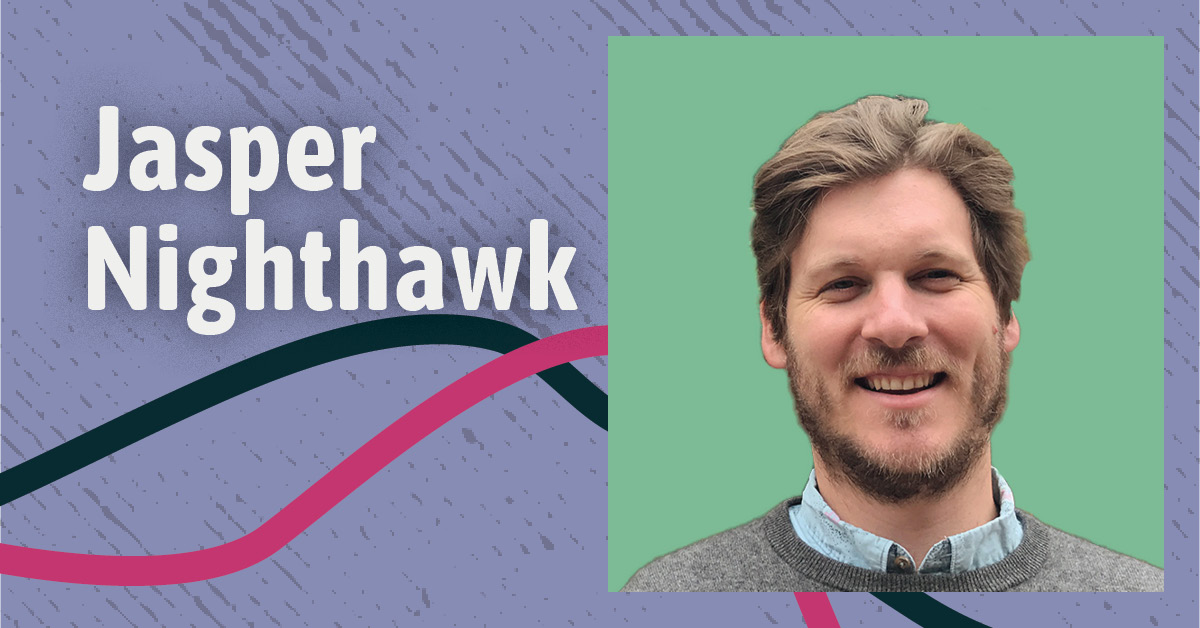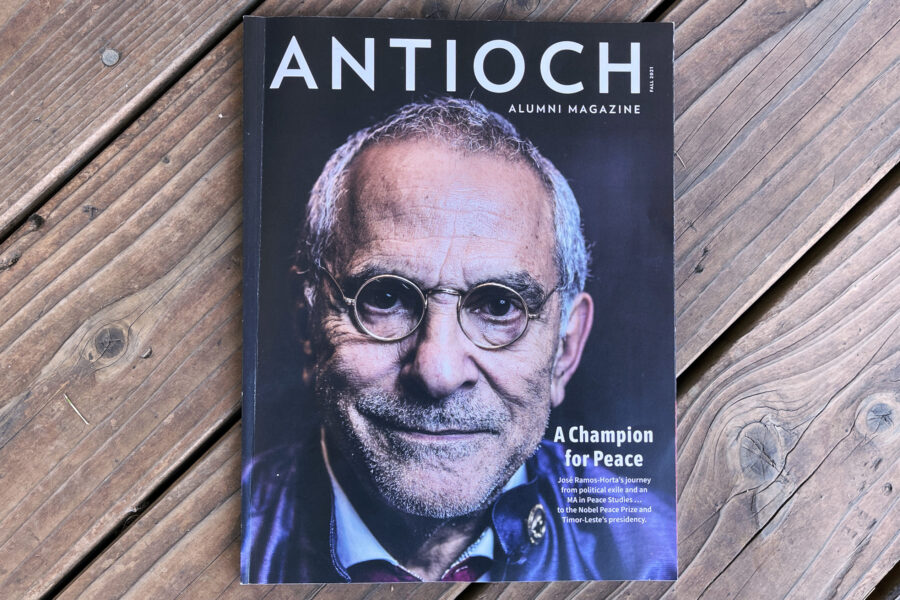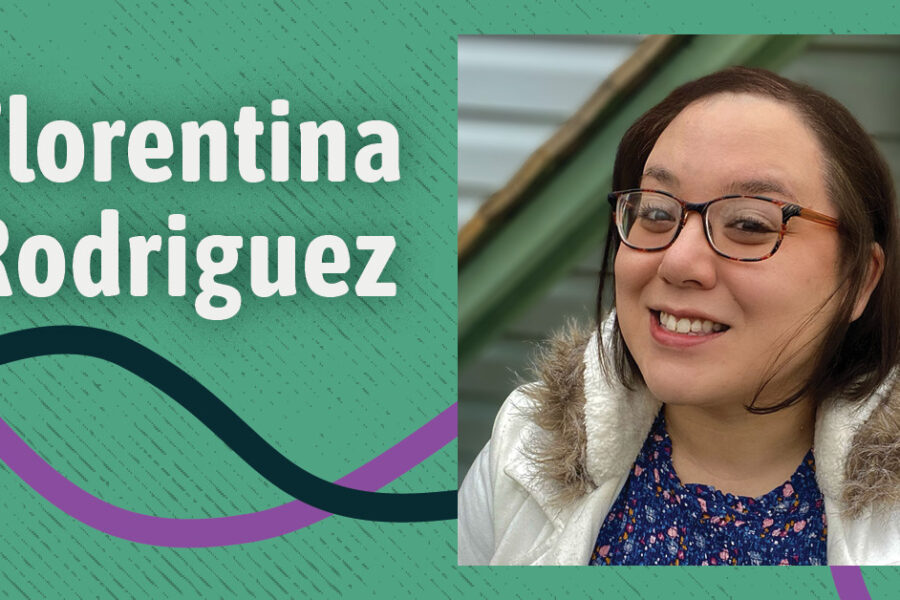The latest annual edition of the Antioch Alumni Magazine recently came out both in hard copies sent to over 40,000 alums, and in a digital version available to everyone. It features stories about Antioch University and its impressive alums, especially those whose work has reverberated through their community—from addiction treatment to poet laureates. It made sense, then, that the magazine’s editors are both themselves Antioch alums: Karen Hamilton ‘17 (Antioch Los Angeles, MA) and Jasper Nighthawk ‘19 (Antioch Los Angeles, MFA). To commemorate the issue’s release, I recently asked Nighthawk some questions about the work of not just editing the magazine but also, in his case, writing the cover story, a profile of Nobel Peace Prize laureate José Ramos-Horta. We discussed how Antioch can be a beacon for people who want to do good work, his longstanding love of sharing stories (his job at Antioch is “University Storyteller”), and the steps necessary to put together a whole magazine from the earliest planning stages through to final publication.
When working on the alum magazine, having a macro lens putting it all together, do you see threads or connections throughout it?
I definitely see connections throughout the magazine, which is partly why we chose to name this issue “A Common Thread.” We sought out a number of articles focusing on multiple alums working in similar spaces—addiction treatment, leadership, being poet laureates, or pivoting from show business into psychiatry—and what stuck out to me when we actually heard their stories was the way that their values converged, even if the specifics of their work were different. Antioch is known for being a progressive university, and with this magazine it was really evident the ways that our alums embody that. Of course I don’t think that Antioch can take too much responsibility for molding these alums into the people they have become, but I do think that the University serves as a valuable beacon and gathering place for people who share both an understanding of the world’s pressing problems and a commitment to working to resolve them. That shines through in every story in the magazine.
What does it mean to you to be a storyteller?
I love my job title of being University Storyteller, because I feel like it empowers me to think about the big question of what it is that makes Antioch distinctive while also demanding that I seek out the ten thousand little stories that capture that overall spirit. Ultimately, Antioch is just an idea, and that idea lives in the actions of the faculty and students and alums who choose to come together as a University. I find it endlessly interesting and rewarding to explore the stories of the people who make Antioch what it is. And I believe that if we tell these stories in beautiful and powerful ways, that actually helps strengthen our community—and in helps us show others Antioch’s special qualities. As storytellers, we’re free to do this in whatever medium best suits the project, from written pieces on our university news site Common Thread to deeply illustrated pieces in the Alumni Magazine, and from video interviews with faculty to audio conversations on the university’s podcast, The Seed Field Podcast.
How do you hope the Alumni Magazine functions within the Antioch community?
This magazine is primarily intended for alums—hence its title—and we hope that it helps them feel connected both to each other and to their alma mater. From our class notes and obituaries through to the many alum profiles that we publish, the magazine aims to be a portrait of this community. We feel like all Antiochians do share some “common threads,” and these are what knit us together into a rich tapestry of life and service and activism. The magazine also gives us a chance to back up a little bit and think about the University as a whole: what is Antioch? What have we accomplished this last year? Where are we headed as an institution? So hopefully it serves an explanatory purpose. I think that more people than just alums will be interested to read the magazine, from faculty and staff to current students as well as folks who are considering joining our community.
What was the process of writing the cover story? How did you feel?
I was honored to take on the task of writing the cover story, a profile of Dr. José Ramos-Horta. It was an exciting moment in the process of editing the magazine when he wrote back to Karen Hamilton and my email agreeing to be featured. Maybe this is obvious, but I had never had the chance to profile a laureate of the Nobel Peace Prize before, nor had I interviewed a former president. So I was definitely nervous. But he ended up being the gentlest, sweetest person you could ever talk to. We conducted our interview over email, and he soon started addressing me in this manner: “Hello Dear Good Man Jasper.” Isn’t that the most wonderful way for someone to start an email to you? He put me quickly to ease, despite his power and international prominence. And he clearly was delighted to remember his days of studying at Antioch, his thesis committee members, and his connection to the University. After I interviewed him, the challenging thing was to actually write the article! I ended up reading a lot of Ramos-Horta’s writings including his Nobel address (which was inspired partly by the research he did at Antioch), listening to other interviews he has given, and reading deeply into the history of the country of Timor-Leste. There’s a lot there. Luckily, I had given myself a word limit at the beginning, so the challenge was just to boil it down into those confines. Finally, I asked you, Mair, to edit the piece, and we came up with a final version.
I think I’m correct that this size of a project was new for you. What did you learn putting the magazine together—about Antioch, about a project that size, about yourself?
You’re right that I had never worked as co-leader of a project this big. I was lucky to have Karen Hamilton as the magazine’s co-editor. She actually has served as editor or co-editor of the Antioch Alumni Magazine ever since its founding. So she helped immensely in keeping everything on course and having the institutional knowledge to make sure the project was a success. I took the lead on editing the stories in the magazine, while Karen took the lead on pulling together and editing the class notes, obituaries, and donor list (each a massive task). I think the thing that most surprised me was how much administrative work there is, behind the scenes, in making sure all the writers are moving forward, talking with departments to find story subjects, coordinating with our subjects to get photos and photo releases, and then on the other end dealing with the printer and ensuring the magazine actually gets out to our over 41,000 subscribers. What a lot of work! But when you see it all coming together, it’s a joy to behold.
Did you ever imagine putting a whole magazine together? How many hats did you wear?
Since high school, when I edited my school newspaper, I’ve loved putting together words and images into something that gets printed and distributed. I just love books and book-like things. When I graduated from the Antioch MFA, I helped publish an anthology of writing from our graduating cohort, and I spent a lot of my twenties editing and publishing anthologies of student poetry. So this is definitely my kind of project, and one I feel like I’ve long been preparing for. At the same time, magazines are so full of content and also ought to be so thoughtfully designed that it turned out to be a whole different level of work than what I had ever done before. So while I had certainly imagined putting a whole magazine together, I’m not sure my mind was strong enough to imagine just how many little steps there would be. And the steps were many!
Is there anything else you’d like to say about the magazine for the article that I may not have thought to ask about?
The only thing I would add is just a note of thanks to all of the writers and other contributors who helped make the magazine a reality, which included Antioch’s Chancellor Bill Groves, who wrote a letter to the alumni community; the alumni and advancement team of Laura Andrews, Faith Wilder, and Lisa Farese who found stories and connected us with alums; the freelance alum writers who contributed articles; our current work-study writers who both wrote articles and helped edit the magazine; and the whole staff of the Marketing and Communications Department, each of whom contributed in ways large and small.



